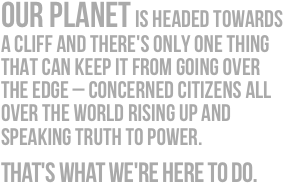-by Matthew
Two rounds of applause concluded Denmark’s Minister for the Environment and Nordic Cooperation, Connie Hedegaard, at her high level speech today. Finally somebody said what we all were thinking, and more. Connie started off her speech with a question: “Does anybody here think that Climate Change is not a problem?” Silence followed. Then another question: “Does anybody think climate change is not happening?”
No, Connie, we all know that Climate Change is happening, and we all know that it is a problem and it is time that the countries present at this conference act like they know to. Thank you for using your few minutes effectively and finally addressing the real issues and the real problems present at this COP. You are right, there is urgency in this challenge and people need to come together and act. If we don’t act fast enough the consequences will be beyond our ability to manage. Nothing will get done in these negotiations unless countries start acting with urgency. The cost of action is much less than the cost of inaction.
Everybody needs to be part of this process. We do have the technology to tackle climate change; all that is lacking is political will. Connie made the point that political will should not only be present in these speeches but also at the negotiating table.
Connie’s speech was heartfelt and integrated personal drive that couldn’t be found in any other high level speech I have heard today. She vowed her personal commitment to mitigating climate change as well as the commitment by the Danish government. Stating that the goal of a carbon free economy is in the reach of human technology.
Connie ended her speech by offering Copenhagen for the 2009 COP/MOP5.
Thank you Denmark and thank you Connie; hopefully more countries will follow your lead and truly take a stand against climate change.


